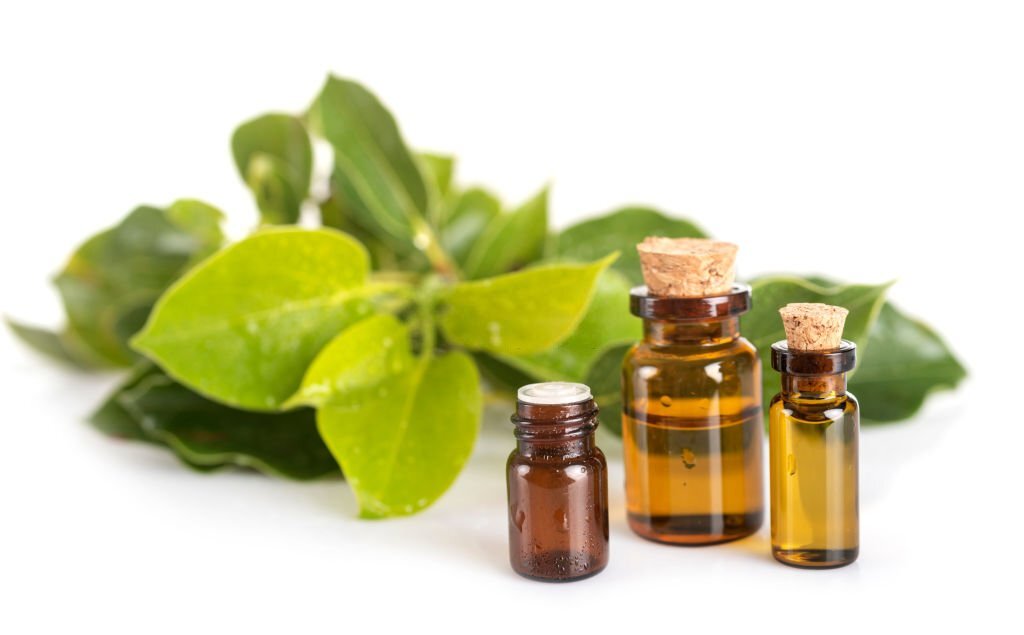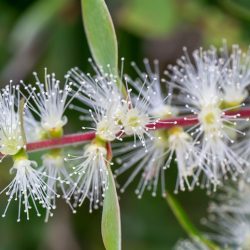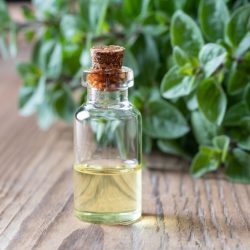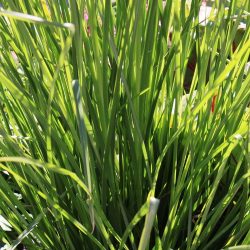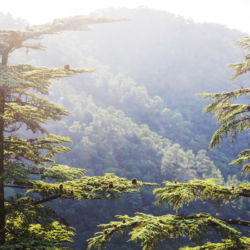Ravintsara, whose botanical name is Cinnamomum camphora ct cineole (Madagascar), belongs to the Lauraceae family. Its essential oil is obtained from its leaves.
History of Ravintsara
Ravintsara is a camphor tree(Cinnamomum camphora) adapted to Madagascar and Reunion Island; what makes it special is that this camphor tree… does not produce camphor! Instead, it produces 1,8-cineole, which gives it its specific biochemical properties, hence the name Cinnamomum camphora ct 1,8 cineole.
Its origins
The properties of this plant were first mentioned in“Histoire de la Grande Isle Madagascar“. In particular, it was described as miraculous, capable of curing various illnesses and infections. It wasn’t until 1775 that the pharmacist and chemist Antoine Baumé first extracted Ravintsara essential oil, and a few years later the botanist Pierre Boiteau studied and described its curative properties.
The word ” ravintsara ” means “good leaf” in Malagasy (Ravina = Leaf, Tsara = Good). Ravintsara is a variety of camphor tree(cinnamomum camphora) acclimatised to Madagascar and Reunion Island; its specificity lies in the fact that in Madagascar (and Reunion Island), this camphor tree…does not produce camphor! Instead, it produces 1,8-cineole(eucalyptol), which gives it its biochemical specificity (or chemotype), so it is called Cinnamomum camphora ct 1,8 cineole.
There are other biochemical specificities for cinnamomum camphora, but in this case we are no longer dealing with ravintsara, for example: cinnamomum camphora ct linalol : This is Hô Wood or Japanese Camphor tree.
It originates from Asia, particularly China, Japan and Vietnam. It is now mainly found on the island of Madagascar, where it was introduced in the 19th century. It has also become acclimatised in Australia, South Africa, the United States (in California) and to some extent in Europe and North Africa.
The properties of this plant were first mentioned in “Histoire de la grande Isle Madagascar”. It was described as miraculous, capable of curing all kinds of illnesses and infections.
Its importation
During the 16th and 17th centuries, camphor trees from China were imported to Madagascar from Asia. Initially, the species contained high concentrations of camphor, but its chemical composition changed on Madagascar soil. When it became established on the high plateaux of Madagascar, the plant mutated so that it contained almost no camphor, but was rich in another molecule,eucalyptol(1.8 cineole). This is what gave rise to Ravintsara.
At the beginning of the 20th century, the development of the celluloid industry (a plastic made from camphor) led many countries to successfully cultivate the Madagascar camphor tree in order to extract camphor (Algeria, India, Sri Lanka, the United States, South-East Asia, etc.).
Between the 16th and 17th centuries, Chinese camphor was imported from Asia to Madagascar. Originally, this species contained a high concentration of camphor, but its chemical composition changed on Madagascan soil. When it became established in the hills of Madagascar, the plant mutated and contained virtually no camphor, but was enriched with another molecule, 1.8 cineole. This gives rise to Ravintsara.
Exploitation
Ravintsara is often confused with a species endemic to Madagascar, Ravensara aromatica, which has a different composition and properties.
Madagascar has almost 12,000 species of plant found nowhere else in the world. So what was the need to plant camphor, a tree native to Asia?
Very often, mankind introduces this or that species of animal or plant to this or that region, whether through desire or ignorance, at a time when ecology was not yet a concern. Just think of the deer in New Zealand, the rabbit in Australia or the rat in the Kerguelen Islands. But also Japanese knotweed, whose primary purpose was ornamental, as well as so many other so-called invasive plants that are harmful to the biotope in which they settle, because they are far too aggressive for endemic species to be able to quickly oppose them or even acclimatise to them.
Sometimes, mankind finds a way of correcting its original error (well, that of its ancestors). For example, New Zealand deer meat is exported all over the world. At other times, we add a new error that we think will correct the first. The introduction of the fox in Australia to control rabbits is a tragic example of this. In France, we still don’t know what to do with Japanese knotweed, a medicinal plant in its country of origin, for the simple reason that it often grows in polluted areas.
On the other hand, what the people who introduced the Asian camphor tree to Madagascar certainly didn’t know was that this tree has given us a miracle: ravintsara.
Distillation
The content and chemical composition of essential oils vary according to where they are grown, the harvesting season and the amount of sunlight the tree has been exposed to.
For example, the essential oil extracted from the Madagascar camphor tree will differ depending on the country of origin: the oil from Madagascar is rich in cineole and free of camphor, and is known as Ravintsara essential oil. The oil from China is Hô wood essential oil, rich in linalool, and the oil from Vietnam and Japan is camphor essential oil, rich in camphor.
Ravintsara essential oil is extracted by steam distillation from freshly picked leaves. The leaves are harvested by hand and, to avoid any maceration, the extraction is carried out on the day they are picked or the following day at the latest.
It wasn’t until 1775 that Ravintsara essential oil was extracted for the first time by the pharmacist and chemist Antoine Baumé. A few years later, the botanist Pierre Boiteau studied and described its therapeutic effects.
What are the pharmacological properties of Ravintsara essential oil?
Expectorant and mucolytic effects of Ravintsara :
As an expectorant, Ravintsara essential oil stimulates the mucin glands and the ciliomotor activity of the bronchial mucosa. It also dries out the respiratory mucosa, improving mucociliary clearance.
Mucolytic by stimulating the exocrine glands of the respiratory mucosa, ravintsara acts by respiratory oxygenation, has a secretolytic action and consequently increases the kinetics of mucociliary transport in the sinuses.
Anti-inflammatory effect of 1,8 cineole:
The action of 1,8-cineole has been demonstrated in vitro on white blood cells (monocytes) against inflammatory inducers such as lipopolysaccharides and interleukin-1. Inflammatory reaction mediators such as arachidonic acid metabolites, leukotriene B, thromboxane-B and prostaglandin E were significantly reduced in the lungs, as was TNF-α (tumour necrosis factor).
Cortison-like, ravintsara essential oil stimulates the pituitary-cortical-adrenal axis, making it useful in prolonged inflammatory conditions.
Antispasmodic effect ofCinnamomum camphora leaves:
This effect is achieved in particular by acting on the smooth muscles of the trachea in relation to acetylcholine.
Antimicrobial effect of Ravintsara essential oil:
An anti-infective and immunostimulant, its antimicrobial activity also acts against Gardnerella vaginalis and Candida albicans (like alpha-terpineol), comparable to that of clotrimazole, which is used in bacterial vaginosis. It has a synergistic effect with amoxicillin/clavulanic acid and gentamicin on strains of Staphylococcus aureus isolated from patients with osteomyelitis.
Other effects:
- Excellent antiviral action
- Neurotonic and stimulating
- Muscle relaxant and analgesic
- Immunomodulating by increasing βgamma-globulins
- Antifungal
- Hypotensive
- Eucalyptol(1,8-cineole) inhibits the main viral proteinase Mpro of SARS-CoV-2, which is necessary for the reproduction of the coronavirus
Does Ravintsara essential oil require any precautions for use?
- Do not use in combination with cortisone, as there is a risk of drug interaction
- Do not use over a prolonged period, as there is a risk of resting the pituitary-adrenal axis and suffering acute adrenal insufficiency if you stop taking the essential oil
- Avoid applying the essential oil in the evening or before any period of rest
- Not recommended for people suffering from osteoporosis, due to the inherent risk of decalcification
- Do not diffuse (irritating to the respiratory tract)
- Not recommended for asthmatics, people with respiratory insufficiency, allergy sufferers or epileptics
- Not recommended for pregnant or breast-feeding women
- For adults only (risk of convulsions in children)
- Metabolised by cytochrome P450 to 3alpha-hydroxy-1,8-cineole, 1,8-cineole is one of the substrates of CYP3A enzymes (CYP3A4 in particular) in liver microsomes, risk of drug interactions, ask your pharmacist for advice
Medical literature and clinical trials:
- Michaël Mansard, Dominique Laurain-Mattar, Françoise Couic-Marinier. Ravintsara essential oil, Actualités Pharmaceutiques, 2019
- Dutta BK, Karmakar S, Naglot A, Aich JC, Begam M. Anticandidial activity of some essential oils of a mega biodiversity hotspot car. in India. Mycoses. 2007
- Satyal P, Paudel P, Poudel A, Dosoky NS, Pokharel KK, Setzer WN. Bioactivities and compositional analyses of Cinnamomum essential oils from Nepal: C. camphora, C. tamala, and C. glaucescens. Car. Nat Prod Commun. 2013
- Mahilrajan S, Nandakumar J, Kailayalingam R, Manoharan NA, SriVijeindran S. Screening the antifungal activity of essential oils against decay fungi from car palmyrah leaf handicrafts. Biol Res. 2014
- Hasani A, Pavia D, Toms N, Dilworth P, Agnew JE. Effect of aromatics car on lung mucociliary clearance in patients with chronic airways obstruction. J Altern Complement Med. 2003
- Behrbohm H, Kaschke O, Sydow K. [Effect of the phytogenic secretolytic drug Gelomyrtol forte on mucociliary clearance of the maxillary sinus]. Laryngorhinootology. 1995
- Trinh HT, Lee IA, Hyun YJ, Kim DH, Car. Ba. Artemisia princeps Pamp. Essential oil and its constituents eucalyptol and α-terpineol ameliorate bacterial vaginosis and vulvovaginal candidiasis in mice by inhibiting bacterial growth and NF-κB activation. Planta Med. 2011
- Hriouech S, Akhmouch AA, Mzabi A, Car. B, Chefchaou H, Tanghort M, Oumokhtar B, Chami N, Remmal A. The Antistaphylococcal Activity of Amoxicillin/Clavulanic Acid, Gentamicin, and 1,8-Cineole Alone or in Combination and Their Efficacy through a Rabbit Model of Methicillin-Resistant Staphylococcus aureus Osteomyelitis. Evid Based Complement Alternat Med. 2020
- Sharma, A.D.; Kaur, I. Eucalyptol (1,8 cineole) from Eucalyptus Essential Oil a Potential Inhibitor of COVID 19 Corona Virus Infection by Molecular Docking Studies . Car Preprints 2020

